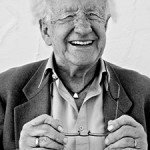Japan revisited – 70 years later
By Johan Galtung
70 years have passed since Japan capitulated to the Allies 15 August 1945. The key early postwar Japanese politicians, diplomats, academic advisers etc. have now retired and give highly interesting accounts, revealing some of the tricks and lies of the state system.
That may also apply to them if trying to relieve themselves of bad conscience. However, leaving that aside, the focus here is on how I myself, conventionally knowledgeable of Japan, revisit, and revise.
More particularly, on three aspects of Asia-Pacific history:
• I thought, “Asia for Asians” meant “Asia for Japan”; but what happened?
• Japan pre-1945; the economic-military-cultural-political legacy?
• Japanese atrocities particularly in Korea and China; apologies?
Only Japan in the whole world fought all Western colonial powers: Russia 1904-05, Germany WWI, USSR WWII, English-French-Dutch December 1941, USA after Pearl Harbor. For that, they all hated Japan. Other Asians, not China, fought their own: India-Malaya-Burma the English, Vietnam the French (and Japan-USA-China), Indonesia the Dutch-Portuguese.
Japan “advanced”, filling gaps left by West, occupied, extracted resources. Nevertheless, for those who experienced this for the longest time, Taiwan since 1895 and Korea since 1910, with obvious shortcomings, it was an inclusion in an expanding Japan, very different from Western colonization.
The Taiwanese and Koreans had the same education as the Japanese, had top imperial universities installed in Taipei and Seoul, still occupying top rank, and were accepted by the highest military academy and imperial universities in Japan.
So, what was it?
Not “Asia for Japan”; rather “Japan in Asia”, “Asia Japanized”.
Invited? Not by Western colonialists. The Ching and Yi dynasties in China and Korea were declining; there were openings, indications.
However, history is written by victors; Japan was punished, still is.
Japan’s legacy? Western colonialism put their colonies lowest in the world economic system – most still are – to get resources, little or no education, let alone higher education, with a tiny elite trained in the “mother” country. What happened to those Japan “included”?
Japan left behind an economic model with Buddhist and Confucian culture built into it, a “B-C” economy, not “J-C” for Judeo-Christian. A collective capitalism with rights and duties both high up and low down, and less inequality. And a very concrete development model.
Worth mentioning is one person, the economist Kaname Akamatsu, known in the West for the “flying geese” with a lead goose, Japan; but not known for what makes them fly.
He challenged a pillar in Western economic thought, Ricardo’s comparative advantages, in favor of changing the factor profile by ever higher processing of resources, also human resources, investing the value added in more processing.
He worked out of occupied Malaya and Singapore, as adviser.
Western colonialism kept the processing for itself and pocketed the value added; Japan shared the value added with countries included.
The four “dragons” – South Korea, Taiwan, Hong Kong, Singapore – had all been parts of the system, enabling them to compete with Japan itself later, in the 1970s, 1980s, with very high-level products.
The economy Deng Xiaoping launched in China from 1980 onward was inspired by Singapore, but attributed to the politician Lee Kwan Yew; not to Akamatsu. To him private vs state ownership mattered less, what mattered is ever higher value added invested in processing. The result 35 years later, today, is a booming Chinese economy partly based on the Akamatsu theory, with a Buddhist-Marxist focus on basic needs.
Buddhism-Confucianism, shared all over East Asia is good soil for sowing these Japanese seeds. Collectivism used to be brought inside the company as lifelong employment and seniority promotion, keeping the cohort entering same year together; but this was less copied.
Militarily-politically, post-1945 de facto occupied Japan became a client of USA even interpreting A9 as compatible with “collective self-defense”. East Asia got some of the best of Japan; USA got a satellite, and pushed on Japan their own economy, as “reforms”.
What about atrocities?
Japan was accused of many at the Tokyo tribunal, seven Class-A war criminals were executed; hundreds by military tribunals in China, USSR and other countries in Asia that Japan had occupied.
Most infamous are the Nanjing massacre of presumably 300,000 civilians, thousands of Korean “comfort women” used by Japanese soldiers, and the medical experiment camp in Manchuria; not revisited.
Atrocities did occur, but they were twisted and exaggerated.
Maybe one tenth that number in the Nanjing museum, said to be financed by Japanese trade unions. The majority might have been soldiers dressed as civilians. Japan was fighting a complex war against Chiang Kai-Shek supported by Nazi Germany and at times USA, and Mao supported by USSR, Komintern and a times USA.
Originally, the source of the “comfort women” story is a book by Seiji Yoshida, by his own confession pure fiction, history “as if”. The women were well paid by the soldiers. But the story was picked up by Japanese media outlets, notably Asahi Shimbun, by Japan’s so-called left, by Korea, and used against Japan.
Japan must continue apologizing, forever, for war, colonialism, atrocities. Germany is hailed as the model to emulate. Did Germany apologize for WWII in Europe or colonialism in Africa and the Pacific?
For shoa, yes; basically blaming it on Hitler and the Nazi party. War, colonialism, atrocities were seen as the essence of Japan, as accidental in Germany.
Western racism was at work: impunity for white people – not for yellow. Judged by Western colonial powers whose colonial crimes cry to the heavens relative to what Japan did.
Including me, attributing Western colonialism to Japan. Sorry.
Originally published by Transcend Media Service, TMS, here.
